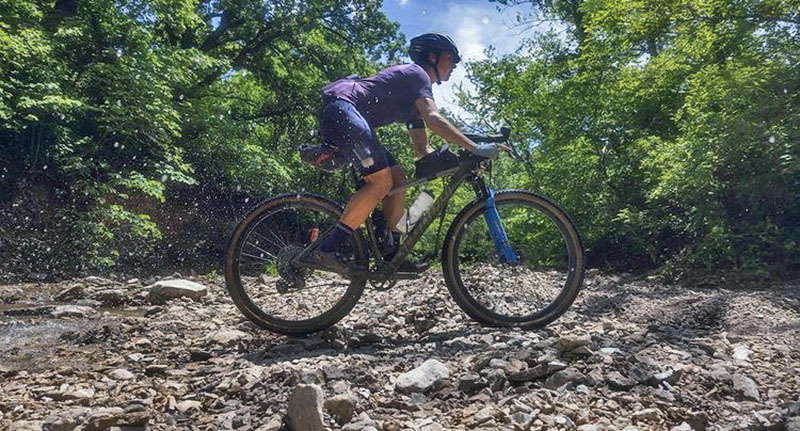Lael Wilcox: I love Unbound XL
When Lael Wilcox repeated her win at Unbound XL, the famous gravel race in the Flint Hills of Kansas, it didn’t come entirely as a surprise – Lael is in a class of her own. And yet that should not detract from the strength, stamina and focus required to race for 27 hours and stay ahead of a very strong women’s field. We’ve had a chance to catch with Lael as she is heading off to her next adventure.
Congratulations! You’ve entered the 350-mile Unbound XL twice, and you’ve won the women’s division both times (and placed in the top ten overall). That’s a truly inspiring performance!
Thank you!
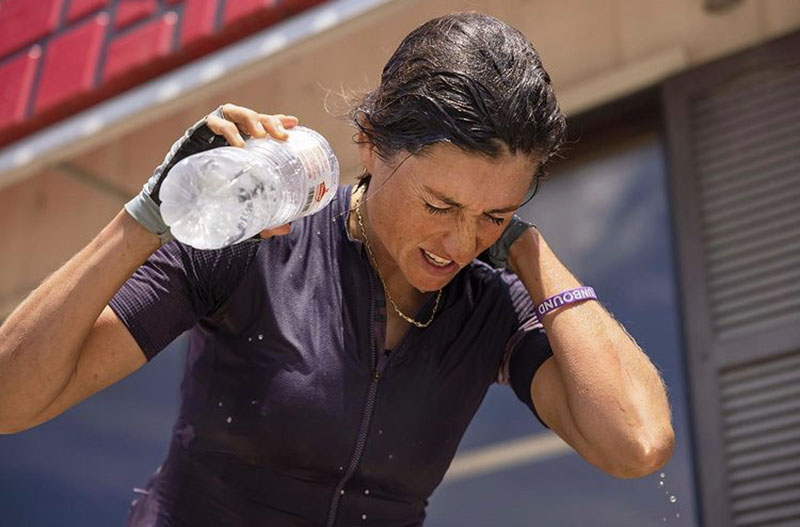
Tell us a bit about the race. How was it? Which parts did you enjoy? Which parts were hard? How was it different compared to last year?
I decided to race Unbound XL just two weeks before the start. I honestly thought it would get canceled and realized when it was going forward that I’d really like to be there. I was a bit apprehensive as I wasn’t sure if I’d fully recover from the 364-mile Oregon Outback time trial. I rode both within a week. I felt great out there.
I love racing Unbound because the local community and everyone that comes is so excited and invested in the event. It’s like a huge party – locals come out on the course to cheer and everyone is so kind. We started at 3 in the afternoon and had a huge send-off to go ride through the night. It was really hot – something like 88°F (31°C). After the neutral rollout, the pace was extremely fast to the first resupply point at mile 41 (km 65).
I loved riding with different people throughout the day and night. The terrain was really rugged – lots of doubletrack, big rocks, ruts and grass fields. It is constantly rolling and hardly ever flat – lots of fun and lots of work for 358 miles (576 km) with 18,000 ft (5,500 m) of climbing. The hardest element was probably the wind. There were really strong winds out of the south and west. Fortunately, this race allows you to draft and work with others – I rode the last 140 miles with a couple of guys, and we helped each other through the wind. The 2021 route was both longer and much more rugged than the 2019 route. For reference, I finished in under 24 hours in 2019 and just under 27 hours in 2021. The vibe was different, too – much more drafting and much more intensity from the start. I had a blast!

What does Unbound represent for you? Do you plan to return in the future?
It’s a big day on the bike. I like the high level of competition and the energy of the event. Often in bikepacking events, it’s a small start without any fanfare. Unbound is different and that’s fun. After a year with very few events, it was a lot of fun to be out there with others, to get to hug friends, and share stories in person.
I love spending time on my bike, whether alone or with others, racing or touring – this one is a lot of fun. In some ways, it was easier and less stressful than other things I do because all I had to do was show up and ride my heart out. I didn’t have to worry too much about logistics or the overall mission. It was great to be a participant!
I’m not a huge planner. I’d definitely go back, but we’ll see how everything goes. I love racing because it’s driven by results. People tend to talk and speculate about their abilities on the bike. It’s exciting when everyone puts their guts on the line, and we see how it plays out.
How do you train for events like these?
I ride my bike as much and as fast as I want to. I love mixing it up with different styles of riding – including road and singletrack, but where I feel most at home are on dirt roads with plenty of climbing.
Before Unbound XL, I got to tour the Oregon Outback with Rue and then ride a time trial on the route. This was all great training. I rode Mount Lemmon dozens of times over the winter and fit in big days on the bike whenever I could.
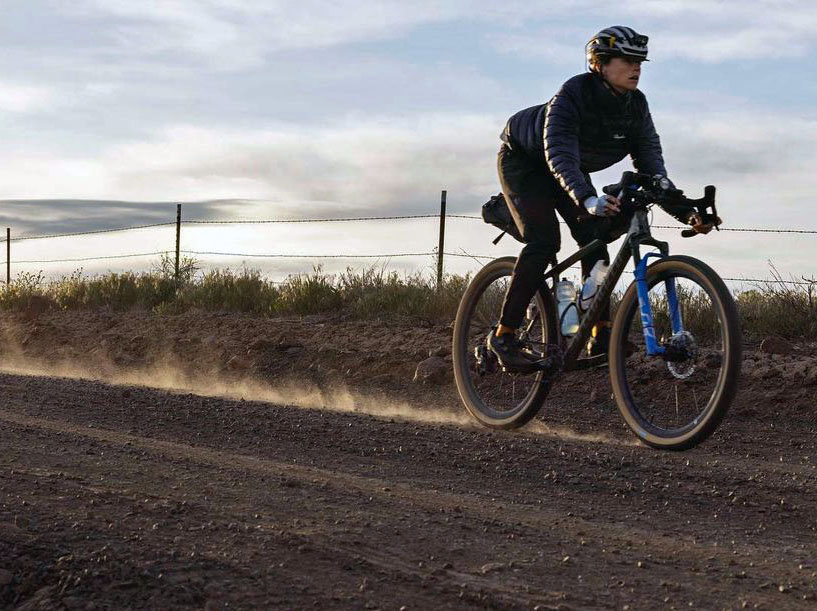
Tell us about your equipment. Most of us expected you to ride your Diverge gravel bike, but you chose your mountain bike with front suspension. Why – and was it a good choice?
I rode the same bike in 2019 — it’s a Specialized Epic Hardtail with an Easton AX70 carbon handlebar and SRAM AXS shifting paired with an Eagle cassette. The only major change I made was running a Rockshox SID fork instead of the Lauf fork I had in the past. I love this bike. I built it for the Tour Divide in 2019, and it’s my go-to for long, rough rides. I used the same bike for the Ruta Chingaza in Colombia and the Oregon Outback.
I loved having suspension for Unbound XL both because the route was pretty rough and because over 350+ miles, you experience a lot of physical fatigue. Having suspension and larger-volume tires helps me experience less pain over time. If I feel better, I ride faster.
How about the shifting? Why do you choose electronic shifting over cable-operated brifters? And why a One-By instead of a double crankset? What gear ratios did you run?
I had a 36T chain ring and a 10-50t cassette. This is what I run for the Tour Divide. I probably could’ve used a 38 or 40T ring, but I didn’t think about it too much. It worked out.
I love electronic shifting. It’s much easier on the hands. My AXS battery died with 13 miles to go. I expected this might happen, and I swapped it out for a spare. The batteries are super light and since the battery is in the rear derailleur, it’s easy to change.
For everything except pure road riding, I use a one-by. It’s mentally simple, lightweight and 12 gears are plenty — especially with such a wide-range cassette.
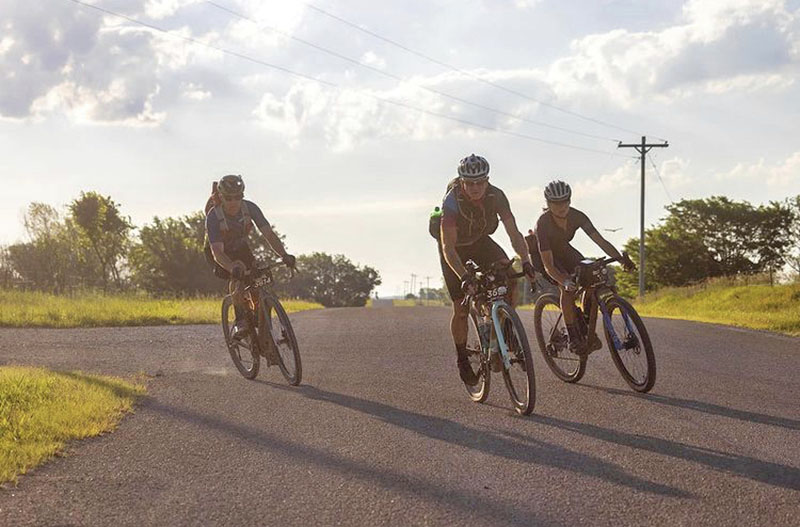
Now the thing everybody wonders about: tires. You ran knobbies, with a Fleecer Ridge 55 on the front and a 48 mm Oracle Ridge on the rear. Most riders were on narrower tires in the 40-45 mm range. Why did you go wider?
Wider is definitely better for descending. I’d find a lot of the people I rode with would slow down for the descents because they were rocky or rutted out. I felt like I could roll right through. Descending is fun! I’d be a little disappointed to have to hold back.
There was a lot of rough terrain on this course – I don’t think wider tires were ever a setback. I was happy to have them. Ultimately, I was more comfortable on my bike and could ride faster.
Fortunately, I didn’t have any punctures or mechanicals. The rocks in the Flint Hills are sharp, and I saw a lot of folks pull over to deal with punctures.
How do you choose your tires for an event – not just Unbound, but any gravel race?
It really depends on the terrain I expect to encounter and the distance for the event. If it’s half pavement, half gravel, I ride my Diverge – generally with 700×48 Oracle Ridge tires (as I will for my time trial on the 850-mile Trans Alaska Pipeline in July).
If it’s mostly dirt and rough, I definitely prefer Fleecer Ridge tires – more comfort. It was fun to ride the Antelope Hill tires for the Oregon Outback – I rode extra lights with latex tubes and had a blast – and I had no problems, either.
Sometimes the bike limits the tire size. I can fit 700×32 on my Specialized Aethos, and I’m really happy with that.
If the event is over multiple days, I generally choose Endurance casings just to avoid problems – fixing flats in the dark while sleep-deprived is no fun.
What tire pressure did you run at Unbound?
Pretty firm – same as on the Oregon Outback. I didn’t really think about it. I’m sure my tires lost some pressure over the night. It felt good.
Lighting is another hotly debated topic among ultra-distance riders. You ran a generator hub, even though it has more resistance than a battery-powered setup. Why?
My bike already has that setup. It’s good consistent lighting. In all honesty, you only need about 7-8 hours of light, so battery powered lights would be a good choice for Unbound XL, too. I also had a Black Diamond Icon Polar Velcro-ed to my helmet to be able to see in my bags, in the trees and in case I had any mechanicals.
Which headlight did you use?
I rode with the SON Edelux light and was very happy with it, as well as the Black Diamond Icon Polar Headlamp as I mentioned before.
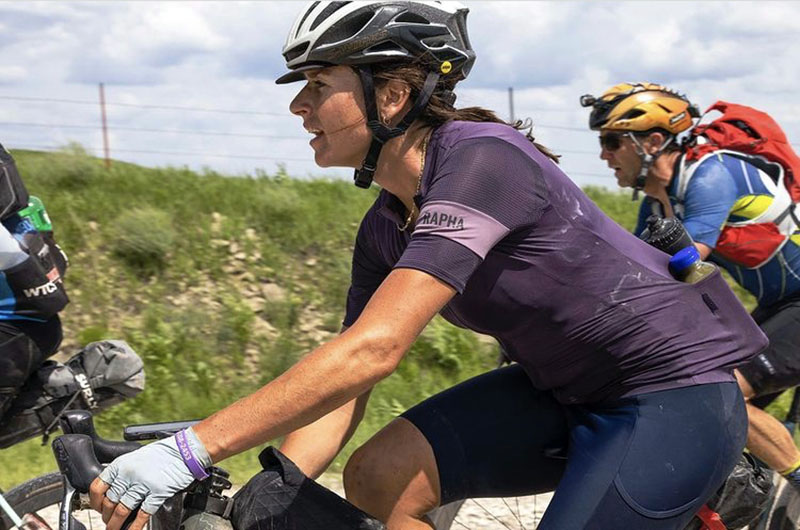
There sometimes seems to be a divide in the cycling world, between those who race or glorify racing, and those who consider themselves ‘unracers.’ You enjoy both touring and racing. Tell us a bit about what you value in each category.
I love spending time on my bike, regardless of the circumstances. Whether riding across town or across the country, no time on a bike is wasted. I don’t own a car and don’t know how to drive. I commute to get to where I need to go. I tour to learn about a place and spend time with others. I race because I love competition and pushing my limits. I don’t value one over another. They’re different and I enjoy them all.
What are your plans going forward? Any exciting projects coming up?
We flew to Switzerland last week, and I’ll be racing the Hope 1000 starting June 19th. It’s a 1,000 km (650-mile) self-supported mountain bike race with 30,000 meters (100,000 ft) of climbing in the Swiss Alps. I last raced it in 2018 and am excited to be back.
In July, we’ll return to Alaska and I’ll ride a time trial on the Trans Alaska Pipeline that travels 857 miles on a mix of gravel and pavement from Deadhorse (Prudhoe Bay) to Valdez. In late July, we have a bikerafting trip planned – bike from Fairbanks to Eagle, Alaska, packraft the Yukon River from Eagle to Circle and bike back to Fairbanks.
We don’t have fixed plans for August yet. I want to ride a time trial on the Tour Divide route, but the Canadian border is still closed. If it opens in the next couple of months, I’ll go for it.
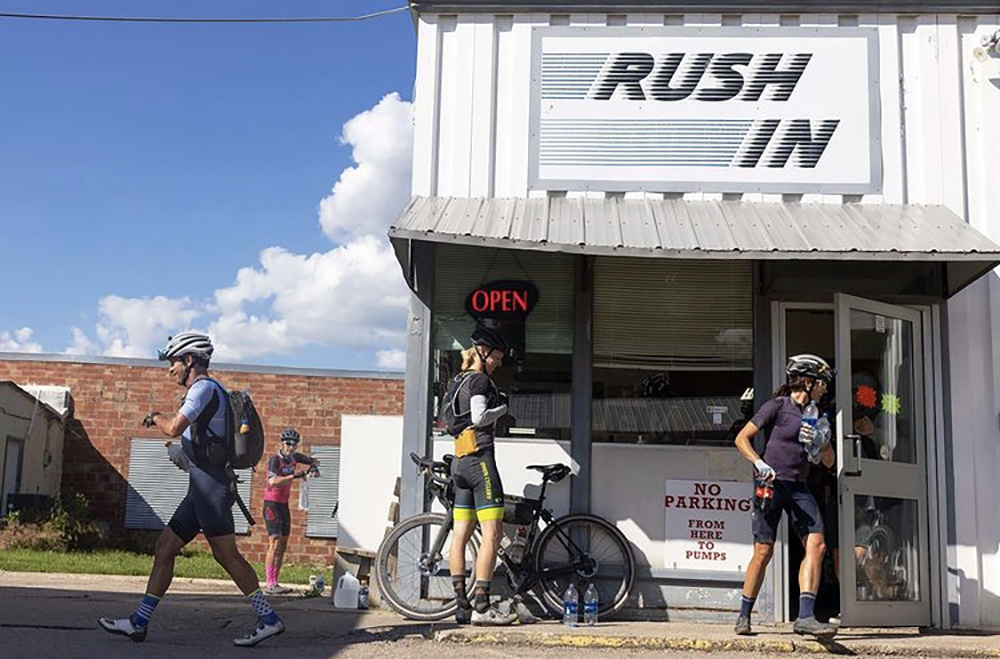
What would you tell somebody who’s thinking about entering their first gravel event?
Have fun out there! From what I’ve experienced, the gravel community is very welcoming and inclusive. Whether you’re competing for the top spot or challenging yourself to ride your hardest, there’s room for everyone. The main difference between entering an event or going for your own ride is that the other people around you bring energy and excitement. It’s great to do both!
Photos: Rugile Kaladyte


